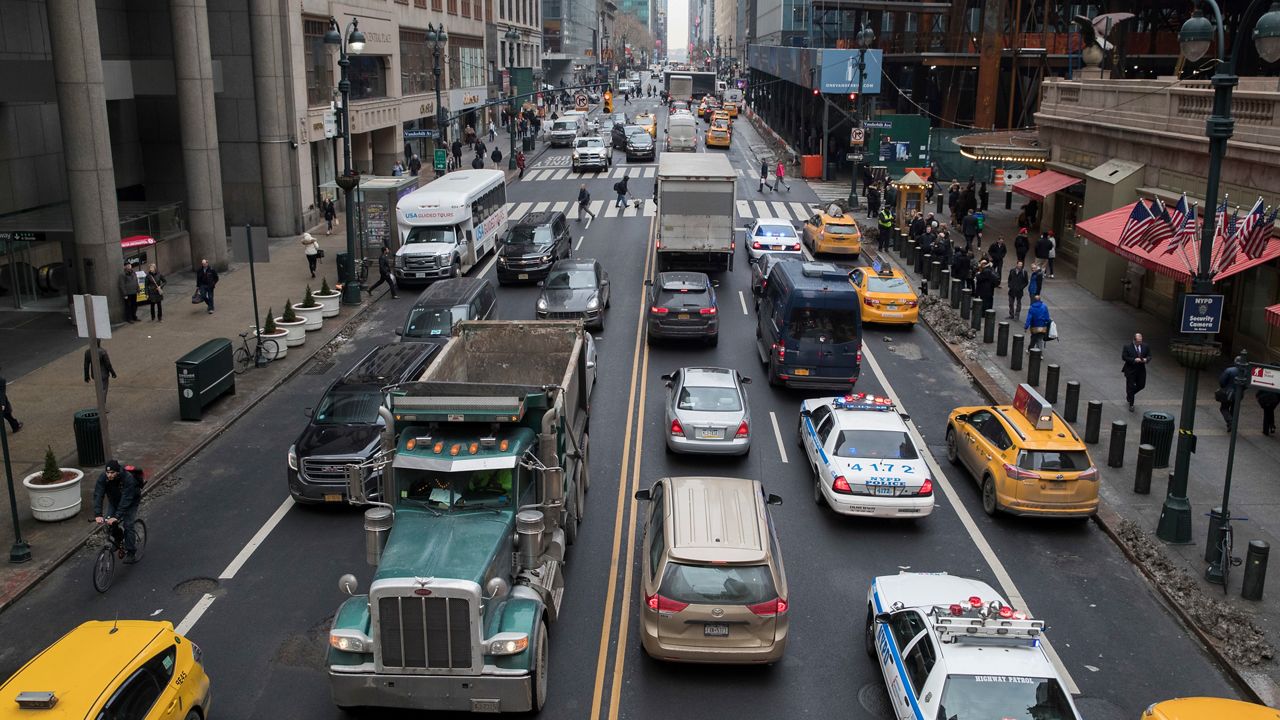New Yorkers aired their concerns and also expressed support for congestion pricing at the first of six virtual public hearings on the MTA’s plan for the Manhattan toll.
“I believe if the MTA were given a trillion dollars, they would find a way to spend it and then they would say they need more,” said one participant.
The proposed fee on drivers entering Manhattan’s busiest streets at the busiest times of day has drawn criticism from residents who live in the congestion zone south of 60th Street. There will be a tax credit for residents who make less than $60,000 year, but some say that’s not enough.
“I wonder why consideration hasn’t been that all residents whose billing for their EZ passes in the zone are not exempt,” said another New Yorker who lives in the congestion zone. “Offering a tax credit doesn’t really make lower income residents exempt.”
During Thursday’s virtual public hearing, some residents condemned what they believe is an exorbitant fee. The MTA is looking to charge $9 to $23 for cars to enter Manhattan below 60th Street, with exemptions for the FDR Drive and West Side Highway.
“I can’t believe that this is evening being discussed,” said one Manhattan resident who lives in the congestion zone. “I mean, how would you feel if they said to everyone in the boroughs it’ll cost you $23 to move your car out of your driveway? I’m sure if that happened, we wouldn’t be having this discussion.”
The MTA’s goal is to reduce the number of cars driving into Manhattan’s core while also increasing subway ridership. Some support this measure, saying fewer cars will save lives and help the environment while others believe cars are a safer alternative to the subway.
“Reducing the number of cars on our streets will save countless lives and help fund the lifeline of our city which is the MTA and the transit system,” said one Bronx resident.
“On a daily basis, criminal activity is a headline on television, radio, print and social media,” said one Queens resident who is disabled and needs to travel by car. “Commuters are afraid to ride mass transit so why does anyone think they will give up their cars and put their health and safety in jeopardy?”
Parking is another major concern. A report released by the MTA earlier this month found that while parking demand would plunge in Manhattan’s congestion zone, there would increased demand near subway stations, as well as north of the 60th Street cutoff.
“In New York City, the tax scheme imposes displacement as drivers seek parking outside the zone in Manhattan’s Upper West Side and East Side, neighborhoods near transit in Brooklyn, Queens and the Bronx,” said one Queens resident. “No capacity exists to absorb displaced cars or new transit riders at any of these locations.”
There will be five more public hearings on the congestion pricing plan this month from Aug. 27-31. The public comment period on the Environmental Assessment also goes through Sept. 9.
For more information on the hearings, testifying, and submitting comments visit: https://new.mta.info/project/CBDTP
Editor’s Note: An earlier version of this story included an incomplete quote.






